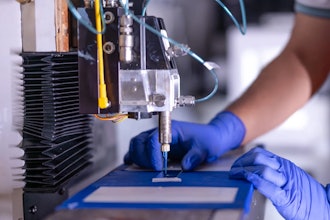
In the process manufacturing world, a significant increase in IIoT implementations has expanded organizations’ accessibility to both operational and equipment data. These projects gather ever more data, providing end users with more visibility into both historical and near real-time data from their operations in local and remote locations. This data presents an opportunity, but a critical problem remains—many companies are data rich and information poor (Figure 1).
 Figure 1: IIoT implementations produce ever more data, but problems often arise when attempting to create viable insights from it.Seeq
Figure 1: IIoT implementations produce ever more data, but problems often arise when attempting to create viable insights from it.Seeq
The process industries create colossal pools of data. For example, some chemical processing facilities have 20,000 to 70,000 signals, oil and gas platforms can produce 100,000 or more, and enterprise-wide networks can have millions of sensors.
When attempting to combine these pools of data using traditional organizational, data cleansing, and contextualizing tools, subject matter experts (SMEs) often face a major standstill. It’s easy to be overwhelmed by these amounts of data, but implementing the right refinement processes can lead directly to transformational insights.
Unfortunately, too many SMEs are still spending their valuable time sorting through spreadsheets to wrangle their data, instead of analyzing patterns and models leading to useful insights.
Some process manufacturing organizations are reporting that over 70 percent of their SMEs’ time is spent simply cleansing data to make it ready for operational analytics. Moving this data from raw to ready should not take up this much valuable time, provided the right tools are applied.
Advanced analytics applications take care of these tedious tasks of accessing, cleansing, and contextualizing data, empowering SMEs to quickly create insights.
By implementing advanced analytics, process manufacturing operations personnel can seamlessly visualize all their up-to-date data, even from multiple disparate sources, and make data-driven decisions to immediately improve outcomes.
Spreadsheets Limit Process Manufacturing Engineers
Spreadsheets have been the standard tool for analyzing data within the process manufacturing realm for the past generation, but they don’t meet the main requirement of empowering SMEs to quickly define critical time periods of interest and relevant context (Figure 2).
 Figure 2: Excel works well for financial calculations, but it often falls short when applied to data analytics.Seeq
Figure 2: Excel works well for financial calculations, but it often falls short when applied to data analytics.Seeq
Spreadsheet drawbacks include:
- Time-series data and related information (including time zones, daylight savings time, interpolation types, and logic) can only be addressed by the user with complex formulas.
- Tools specific to process manufacturing are not available.
- Manual methods must be applied for data cleansing and contextualization.
- Adjusting to data changes is slow and inefficient.
- Collaborating and sharing analyses are difficult.
- Analysis is cumbersome and full of barriers, preventing organizations from analyzing data in the broader business context necessary to increase efficiency and profitability.
In contrast, SMEs who are using advanced analytics applications for configuring data have a streamlined approach and interface for accelerating improvements to production yield, quality, availability, and other operational metrics.
Working with Advanced Analytics Applications
The type of technology leverages innovations in big data, machine learning, and advanced web technologies to integrate and connect to disparate data sources within process manufacturing and drive business improvement (Figure 3).
 Figure 3: Advanced analytics applications empower SMEs to interact directly with IIoT and other data of interest to quickly create insights.Seeq
Figure 3: Advanced analytics applications empower SMEs to interact directly with IIoT and other data of interest to quickly create insights.Seeq
Users are empowered to take advantage of:
- Diagnostic analytics: Save on unproductive downtime by solving a performance issue and determining its root cause.
- Monitoring and alerts: Easily stay updated on all equipment performance metrics without sifting through unnecessary data.
- Predictive analytics: Identify when maintenance is necessary on equipment before downtime occurs, based on historical data, time-series data, and pattern recognition.
- Repeatable analysis: Easily monitor all performance levels against models of ideal conditions with scalable calculations.
- Collaboration with data security: Share analyses and data within the entire operation, seamlessly and securely. The application can be configured to follow data governance protocols specific to each organization and is easy to manage.
Advanced Analytics: Looking Further
To put it briefly, advanced analytics applications give your team the entire picture of data generated by IIoT and other implementations. These types of applications draw relationships and correlations between detailed data through automated cleansing and easy-to-implement calculations and data contextualization, empowering your SMEs to improve performance based on accurate and reliable insight.























